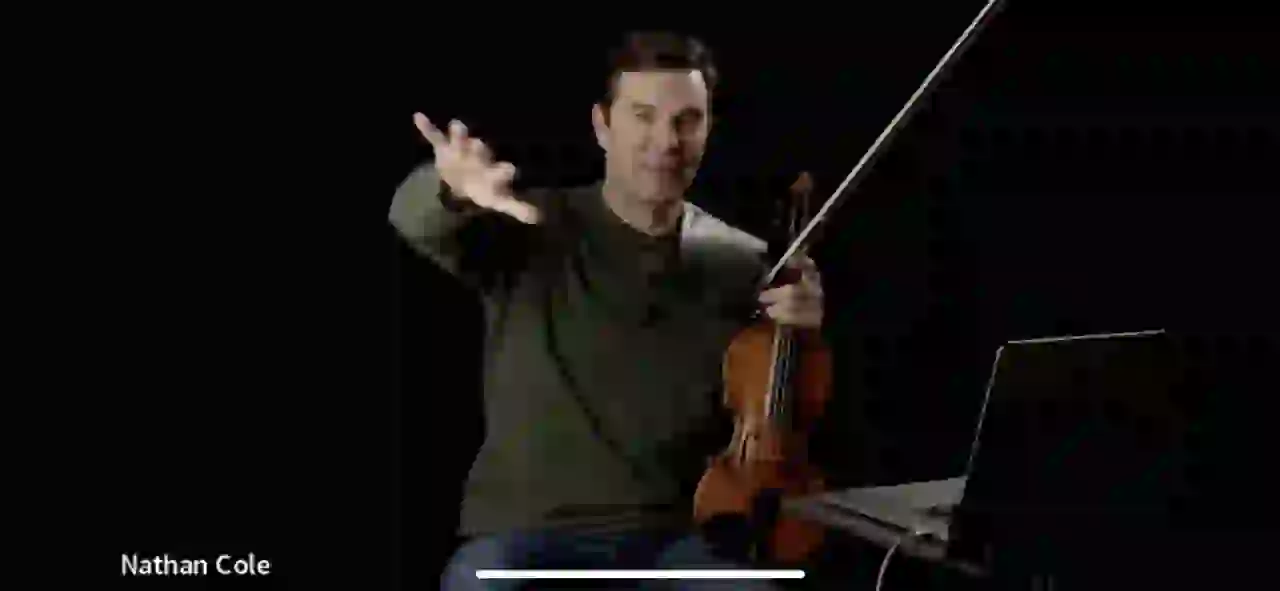Engage the Pinky During Bow Change

During one of his masterclasses, Nathan Cole was helping a student with landing the a soft note after a series of spiccato. She couldn’t get that note piano enough, because the bow coming down from the air carried its own momentum that was out of her control. Nathan offered two major insights: first, don’t think of it as “landing”, but instead, a rolling motion that morphs into coasting rather than sticking a landing; and second, engage the pinky to lighten weight of the bow, so the bow keeps its angle constant. What she had been doing up to that point, was raising her arm to lighten the note, which lifted the frog of the bow, causing the bow to rotate slightly, the tip to drop, and then the bow would slap the string harder than she wanted as it engaged the string at a more direct angle. When she engaged the pinky and started to think about the control of the tip, the problem went away instantly.
While I’m not currently practicing spiccato, Nathan’s lesson on pinky engagement illuminates on another problem: shaky down bow.
There are two common schools of thought about bow change: the most popular paintbrush method, which encourages a soft, flexible wrist as if painting a wall with a brush (demonstrated here); and the method that supposedly belongs to Nathan Milstein: “I move it in one direction, and then I move it back in the opposite direction” 1. I was taught the former, and to be honest, I’ve rarely seen anyone who actually make that Milstein method work, other than Milstein himself. The vast majority of violinists do flex their hand and wrist at the frog, some more conspicuous, some subtle, but hardly as quiet as Milstein.
On the other hand, the paintbrush metaphor is not a perfect one. The emphasis on flexibility in the wrist gives me the impression that bow change is a wrist-centric action. The wrist makes a flexing move, and the rest of the hand just go with the flow. Whenever my bow bounced, I thought to myself that it must be my wrist movement not being fluid enough. And I had never managed to fully fix the problem.
When I was watching Nathan demonstrating that falling spiccato with a straight bow, something clicked in my mind. My problem was not with the wrist, but the fingers. Too much flex in the fingers means that they no longer exerts the same amount of the force to the bow stick, so the frog is a little lighter, while unrelenting gravity keeps a constant pull at the center of mass, rotating the bow like a slight nodding. When the bow nods, the tip is lower and the frog is higher, so for a brief moment, the bow is doing exactly the same thing as the student’s spiccato landing. Sort of like a tiny flap of a wave hitting the rock, and bouncing off into the air. That extra upward force propagates through the stick, causing the infamous down bow bounce.
By engaging the pinky—more concretely, exerting the pinky to resist the frog from rising—the bow can be kept straight. It’s a somewhat paradoxical sensation: from a physical point of view, we want the force to be constant. But because the natural tendency is to soften the finger together with the wrist, my subjective experience is that the pinky needs to be proactive in that split second, to keep the bow straight. Our perception of force and movement don’t always match reality, so to achieve a desired result, sometimes we have to change our perspective and “cheat” our brain. Choosing the right perspective and the right metaphor is the magic ingredient of a great teacher.